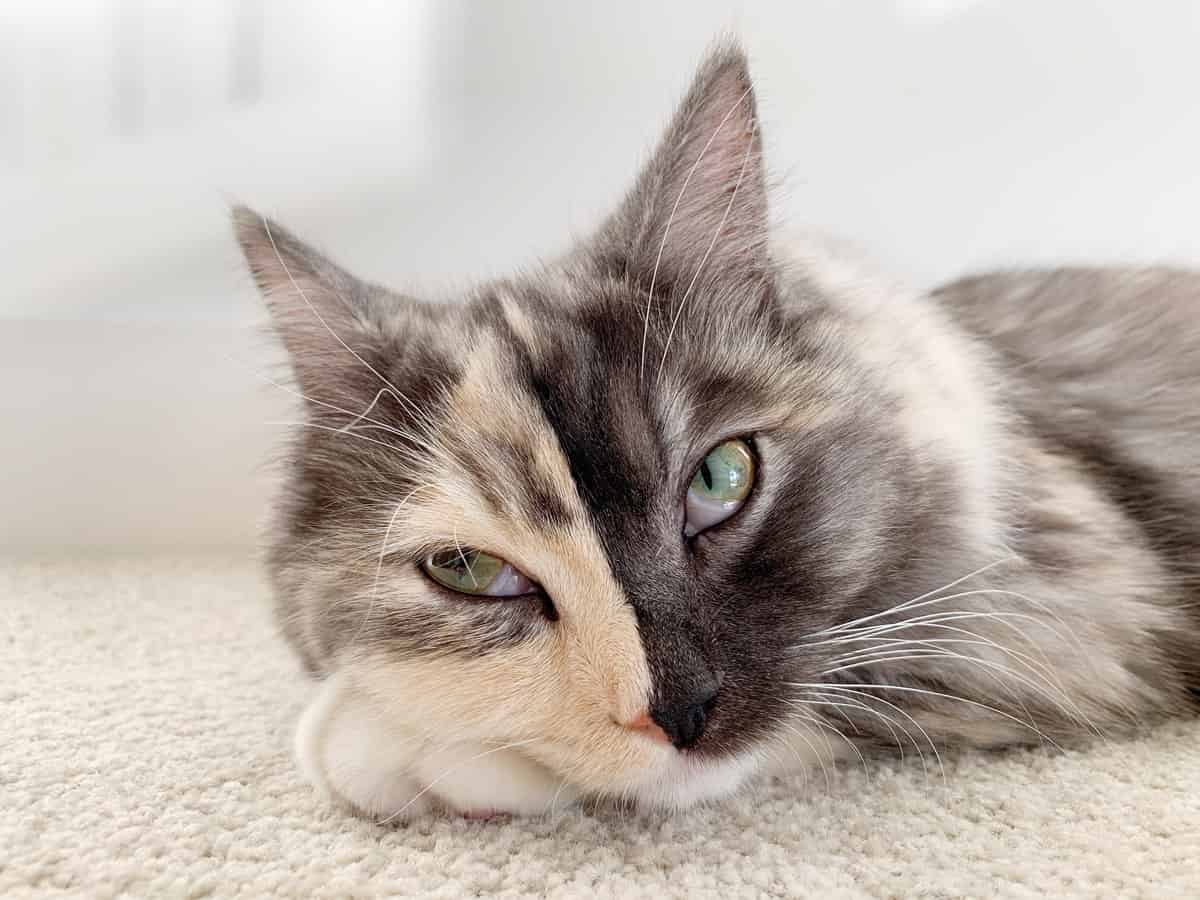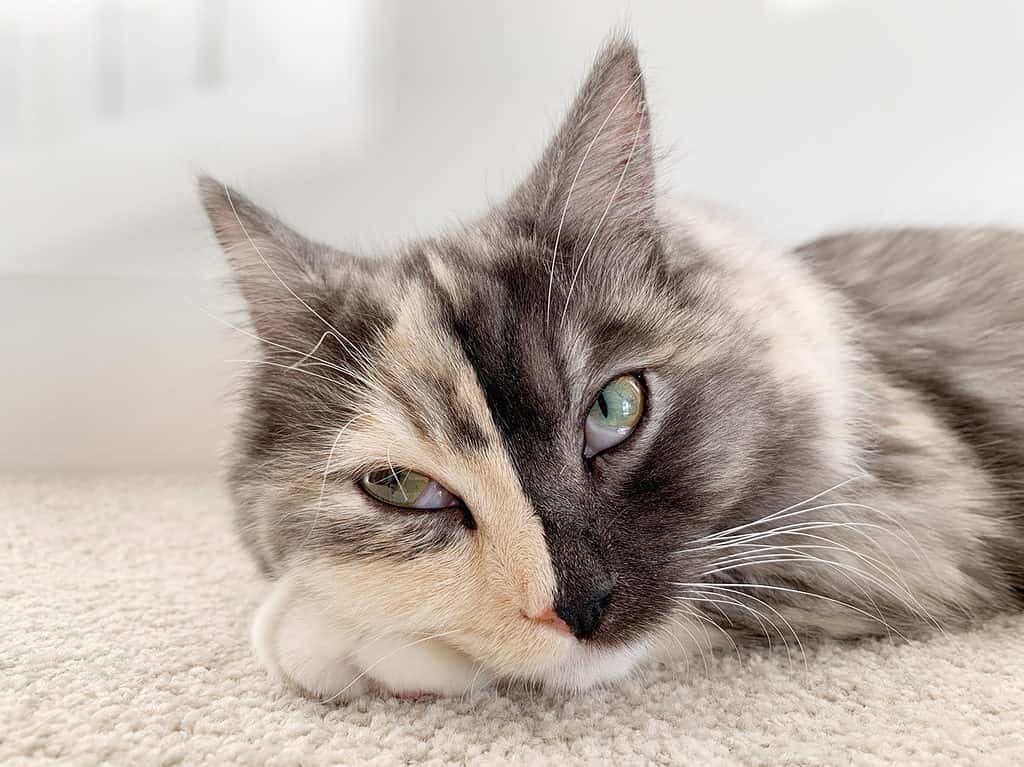A chimera cat is a feline that has genetic material from two different embryos fused together. This results in a domestic cat with two sets of DNA, which can manifest in a variety of physical ways.
For example, a chimera cat might have two different coat colors, or even have a combination of male and female physical characteristics. Chimera cats are quite rare, and their exact appearance can vary depending on how the different sets of DNA interact.
Some people believe that chimera cats are the result of a genetic mutation, but this is not the case. Chimera cats are created when two different embryos fuse together in the early stages of development, which results in a cat with two sets of DNA.
What do chimera cats look like?
Some common characteristics of chimera cats include having two different coat colors, such as one half of the body being black and the other half being orange. They may also have spots or patches of color on their fur that are different from the rest of their coat.
In some cases, chimera cats may have one normal eye and one eye with a different color, known as “odd-eyedness.”
Overall, the exact appearance of a chimera cat can vary greatly and may be difficult to predict.

Chimera cats and female and male chromosomes
The sex of a cat is determined by its chromosomes, and since chimera cats have two sets of DNA from two different embryos, it is possible for them to have both male and female chromosomes. This means that a chimera cat could potentially have both male and female physical characteristics, or it could have characteristics that are more typical of one sex or the other.
In general, the sex of a chimera cat would depend on the specific combination of DNA that it has.
Can you tell a chimera cat by looking at them?
Chimerism can cause the cat to have unusual coloring or patterns on its fur, but it is not always possible to tell if a cat is a chimera just by looking at it.
The only way to truly tell if a cat is a chimera is to do DNA testing. Scientists would take samples from each side of the cat and compare the DNA. If a chimera cat is made up of two sets of DNA from two different embryos, those DNA sequences would be different.
How healthy are chimera cats?
In some cases, chimera cats may have health problems or other abnormalities due to their unique genetic makeup. For example, they may have a higher risk of certain genetic disorders or may have problems with their immune system.
However, not all chimera cats have health problems, and many of these cats live normal, healthy lives.
Interesting facts about chimera cats
- Chimera cats are quite rare, and are thought to occur in only about 1% of all feline pregnancies.
- The term “chimera” comes from Greek mythology, where it referred to a creature that was made up of parts from different animals. In the case of chimera cats, the term is used to describe their unique genetic makeup, which is a mixture of two different sets of DNA.
- Chimera cats are not the same as other cats that have two different coat colors, such as calico cats. In the case of chimera cats, the two sets of DNA come from two different embryos that have fused together, whereas calico cats have a genetic mutation that causes their coat to have multiple colors.
- Chimera cats are often mistaken for other types of cats, such as tortoiseshell cats. However, tortoiseshell cats have a genetic mutation that causes their coat to have a specific pattern, whereas chimera cats have a mixture of genetic material from two different embryos.
- Some people believe that chimera cats have special abilities or traits, such as heightened intelligence or a longer lifespan. However, there is no scientific evidence to support these claims, and chimera cats are thought to have the same abilities and lifespan as any other cat.
Can you breed chimera cats?
It is not possible to create a chimera cat through breeding or other methods. Chimera cats are the result of a natural process that occurs during embryonic development, and they cannot be intentionally produced.
Fertile male tortoiseshell cats
Chimera is one explanation for the extremely rare occurrence of fertile male tortoiseshell cats. Normally, male tortoiseshell and male calico cats are infertile as this fur pattern is sex dependent and occurs in males due to chromosomal abnormalities.
References
Chu, E. H. Y., Thuline, H. C., & Norby, D. E. (1964). Triploid-diploid chimerism in a male tortoiseshell cat. Cytogenetic and Genome Research, 3(1), 1-18. https://doi.org/10.1159/000129794
Jaraud, A., Bossé, P., Dufaure de Citres, C., Tiret, L., Gache, V., & Abitbol, M. (2020). Feline chimerism revealed by DNA profiling. Animal Genetics, 51(4), 631-633. https://doi.org/10.1111/age.12957
Jude, A. C., & Searle, A. G. (1957). A fertile tortoiseshell tomcat. Nature, 179(4569), 1087-1088.
Malouf, N., Benirschke, K., & Hoefnagel, D. (1967). XX/XY chimerism in a tricolored male cat. Cytogenetic and Genome Research, 6(3-4), 228-241. https://doi.org/10.1159/000129944







